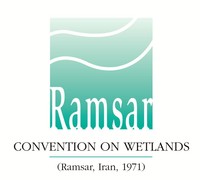
RAMSAR Convention on Wetlands
Signed and adopted in Ramsar, Iran in 1971, the Ramsar Convention on Wetlands is a national, intergovernmental treaty whose mission is to protect and conserve wetlands and their associated resources. The Ramsar Convention provides wetlands around the world with an opportunity to be publicly recognized for their unique and diverse ecological importance. As such, the convention promotes the wise use of resources and designates wetlands with significant ecosystem value as “Ramsar Wetlands of International Importance.” The Olentangy River Wetland Research Park achieved this honor in 2008 under the direction of Dr. Bill Mitsch.
There are currently 2,494 wetlands in the world that have been designated as Ramsar Wetlands of International Importance, for a combined total of 256,786, 140 hectares. The Olentangy River Wetland Park is one of 41 Ramsar sites in the United States and the only wetland in Ohio to have received a Ramsar designation to date. The map below shows the location of all Ramsar designated sites in the world.
How does a wetland get nominated?
To be nominated, local and state wildlife or natural resources agencies, one member of congress, and all landowners within the site boundaries need to submit a letter of support. All nominations for status in the United States are reviewed and approved by the U.S. Fish and Wildlife Service before final submission to the Convention.
Why Wetlands?
- Wetlands provide fundamental ecosystem services such as water quality regulation and mitigation.
- Wetlands are hotbeds of biological diversity.
- Wetlands have valuable economic, scientific, cultural, and recreational connections to their surrounding communities.
- Wetlands play a vital role in climate change adaptation and mitigation.
- Progressive encroachment on and loss of wetlands has a negative impact on the ecosystems they provide.
- Wetlands should be restored and rehabilitated, whenever possible. Wetlands should be conserved by ensuring their wise use.
Navigate to the Ramsar Webpage to learn more about the Convention and the importance of wetlands.
